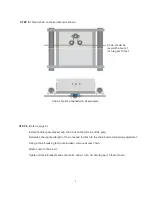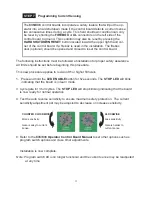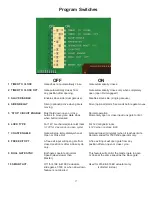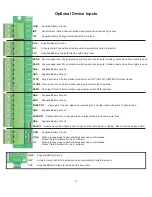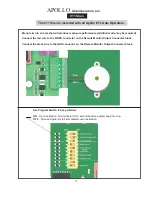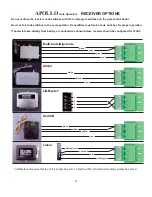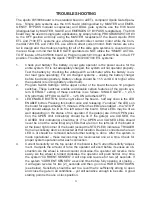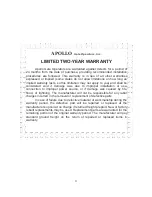
21
The Apollo 835/836 board is the standard board in all ETL compliant Apollo Gate Opera-
tors. Single gate systems use the 835 board (distinguished by MASTER and EMER-
GENCY BYPASS modular receptacles) and DUAL gate systems use the 836 board
(distinguished by MASTER, SLAVE and EMERGENCY BYPASS receptacles). The 836
board may be used in single gate applications by simply turning PROGRAM SWITCH #3
to the OFF position and only using the MASTER receptacle of the board. Apollo 7000
ETL and 7100 ETL systems use a Stature Electric direct current motor while the Com-
mercial 7200 ETL and 7300 ETL use a Bison direct current motor. Both motors are simi-
lar in design and thus trouble shooting for all of the slide gate systems is covered in one
manual. Keep in mind that SLIDE GATE operators do NOT utilize the “SMART ACTUA-
TOR” feature of the 835/836 board so Program switch #10 must ALWAYS be in the OFF
position. Trouble Shooting the Apollo 7000/7100/7200/7300 ETL systems:
1.
Check your battery! The battery in your gate operator is the power source for the
entire system. If it is not adequately charged, the system will not operator properly.
Test the battery by checking the voltage with a volt-meter while the battery is un-
der load (gate operating). For AC charged systems – unplug the battery charger
before load testing battery. Battery voltage should be 11.5 volt DC or higher while
the operator is running (battery under load).
2.
Program Switch Settings: At the upper center of the board there are 10 program
switches. These switches enable and disable certain features of the Apollo sys-
tem. DEFAULT setting of these switches is as follows: SINGLE GATE – 1,2,3,5
ON (all others OFF) DUAL GATE – 1,2,5 ON (all others OFF)
3.
LED ENABLE BUTTON: On the right side of the board – half way down is the LED
ENABLE button. Pressing this button once and releasing it “enables” the LEDs on
the board for approximately 15 minutes. When the LEDs are enabled – the “STOP”
light should always be lit on the left side of the board. Other LEDs may be lit as
well depending on the status of the operator. If the gate(s) are in the OPEN posi-
tion, the OPEN limit indicator(s) should be lit. If the gate(s) are CLOSED, the
CLOSED limit indicator(s) should be lit. (The OPEN and CLOSED LEDs should
never be on at the same time) Any LEDs that are lit on the left side of the board or
at the lower right corner of the board (except the STOP LED) indicate a TRIGGER
from an accessory device connected at that location. Devices connected where an
LED is lit should be removed before further testing is done. After the system is
made operational – these devices may be reconnected one at a time. Check for
proper system operation after each connection.
4.
Current Sensitivity: At the top center of the board is the “Current Sensitivity” adjust-
ment. It adjusts the amount of force the operator will exert before it senses an ob-
struction. As the wheel is turned counter clockwise, the operator will reverse more
easily. As the wheel is turned clockwise, the operator will push harder. Any time
the system “CURRENT SENSES” it will stop and reverse for two (2) seconds. If
the system “CURRENT SENSES” a second time before fully opening or closing –
it will again reverse for two (2)_seconds and then go into a HARD SHUTDOWN
(see below). Sensitivity should be set to a level that is sufficiently strong to open
and close the gate in all conditions – yet still sensitive enough to be safe. A good
starting point is the one o’clock position.
TROUBLESHOOTING



